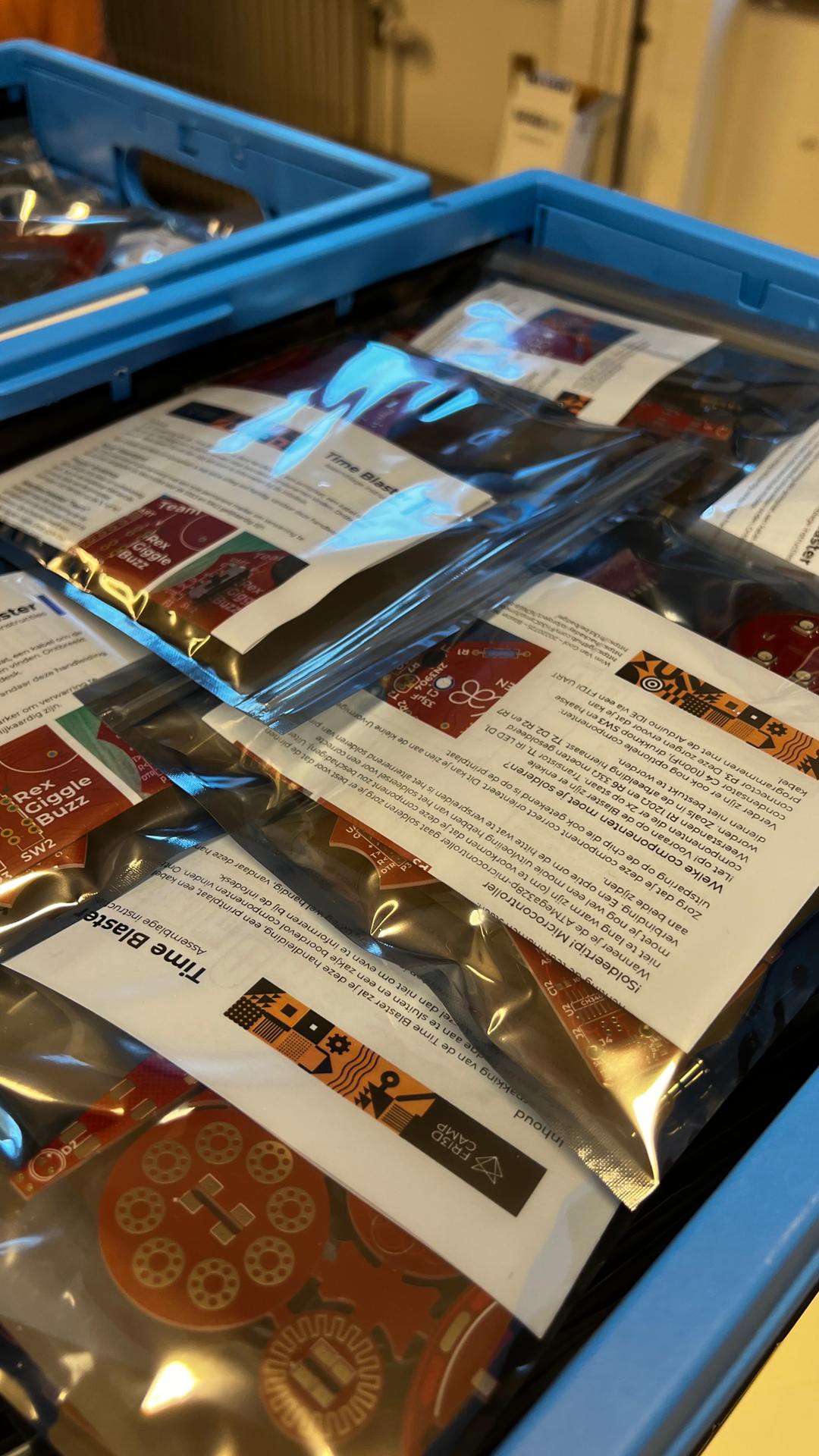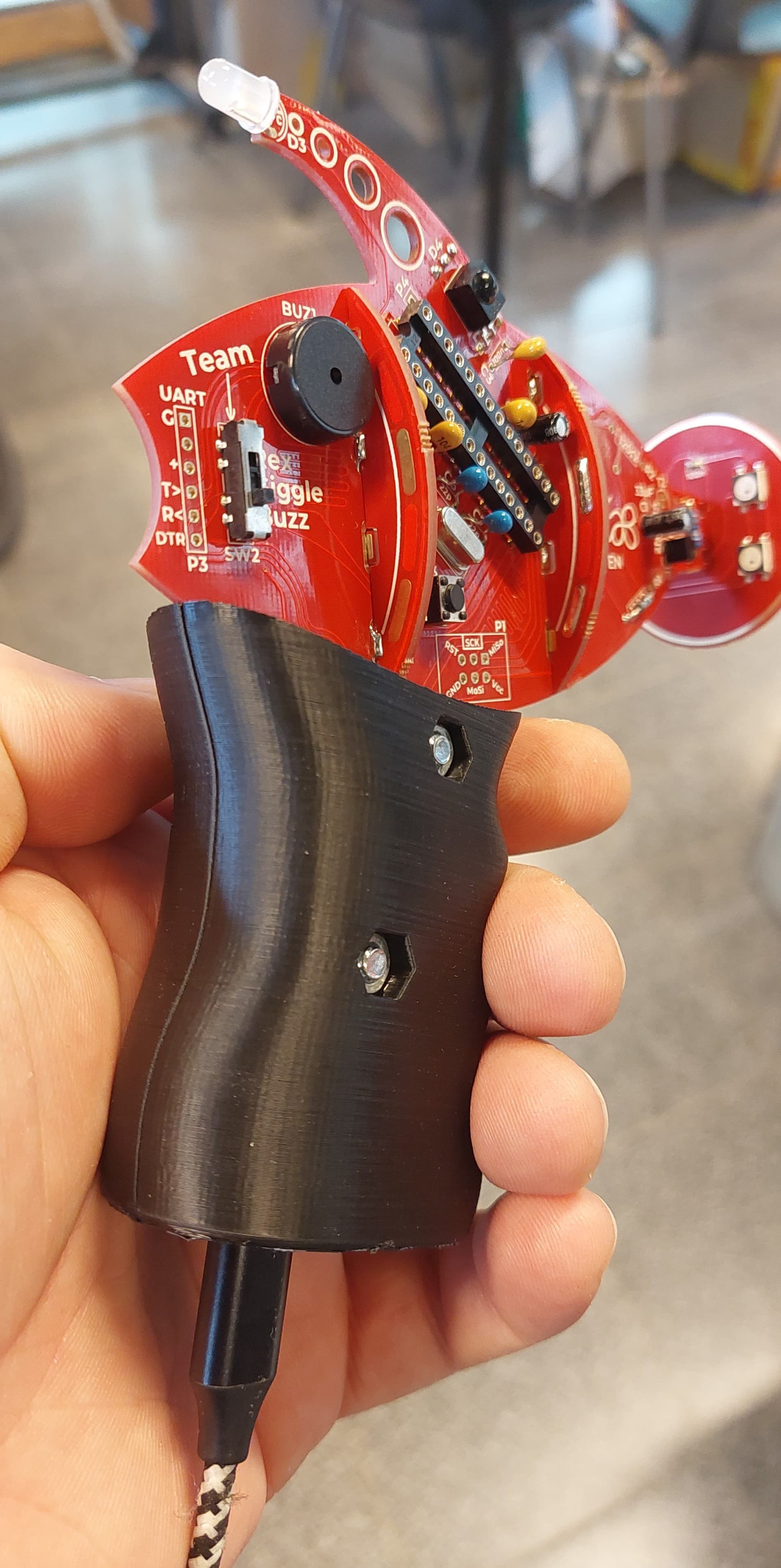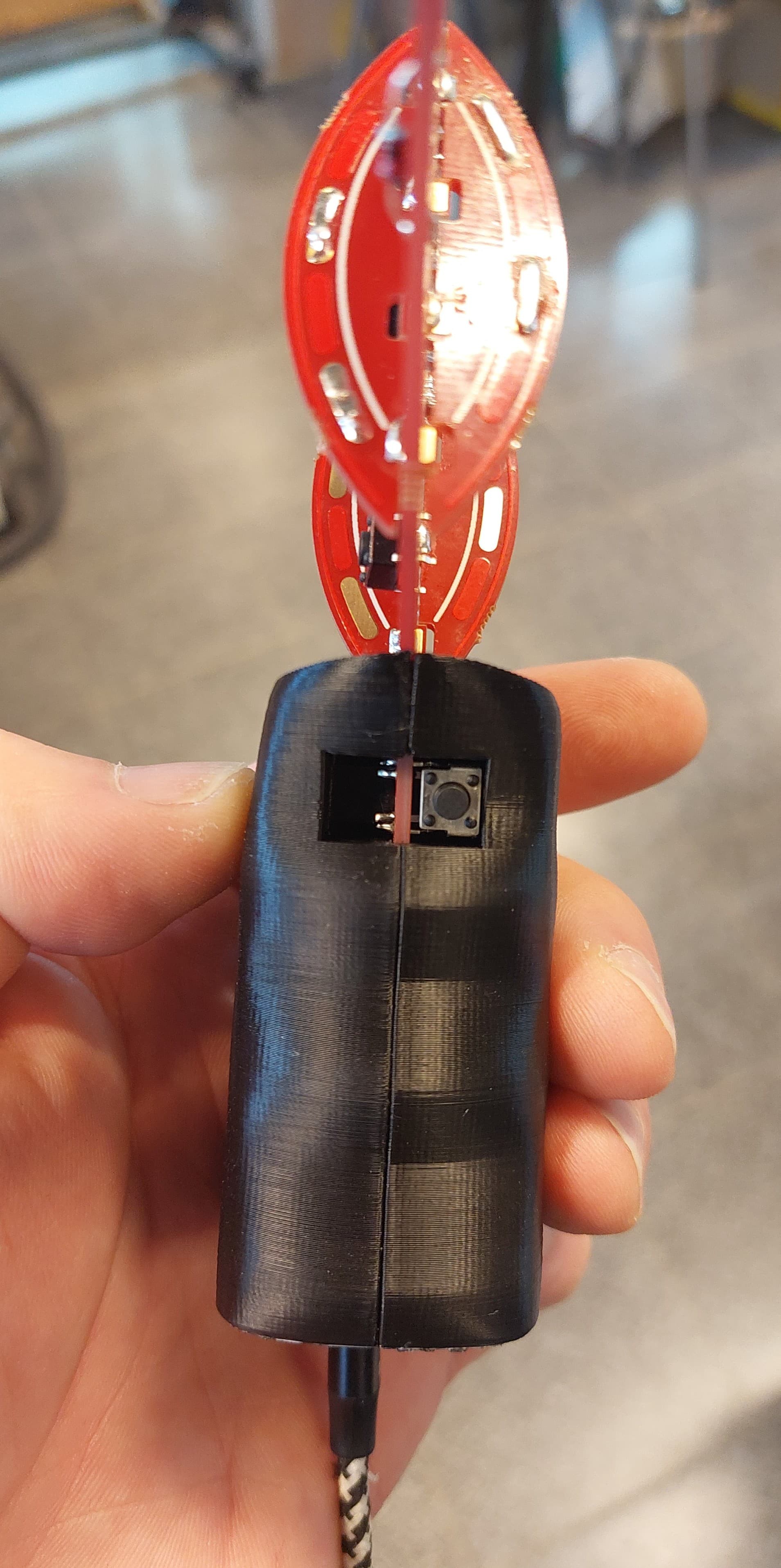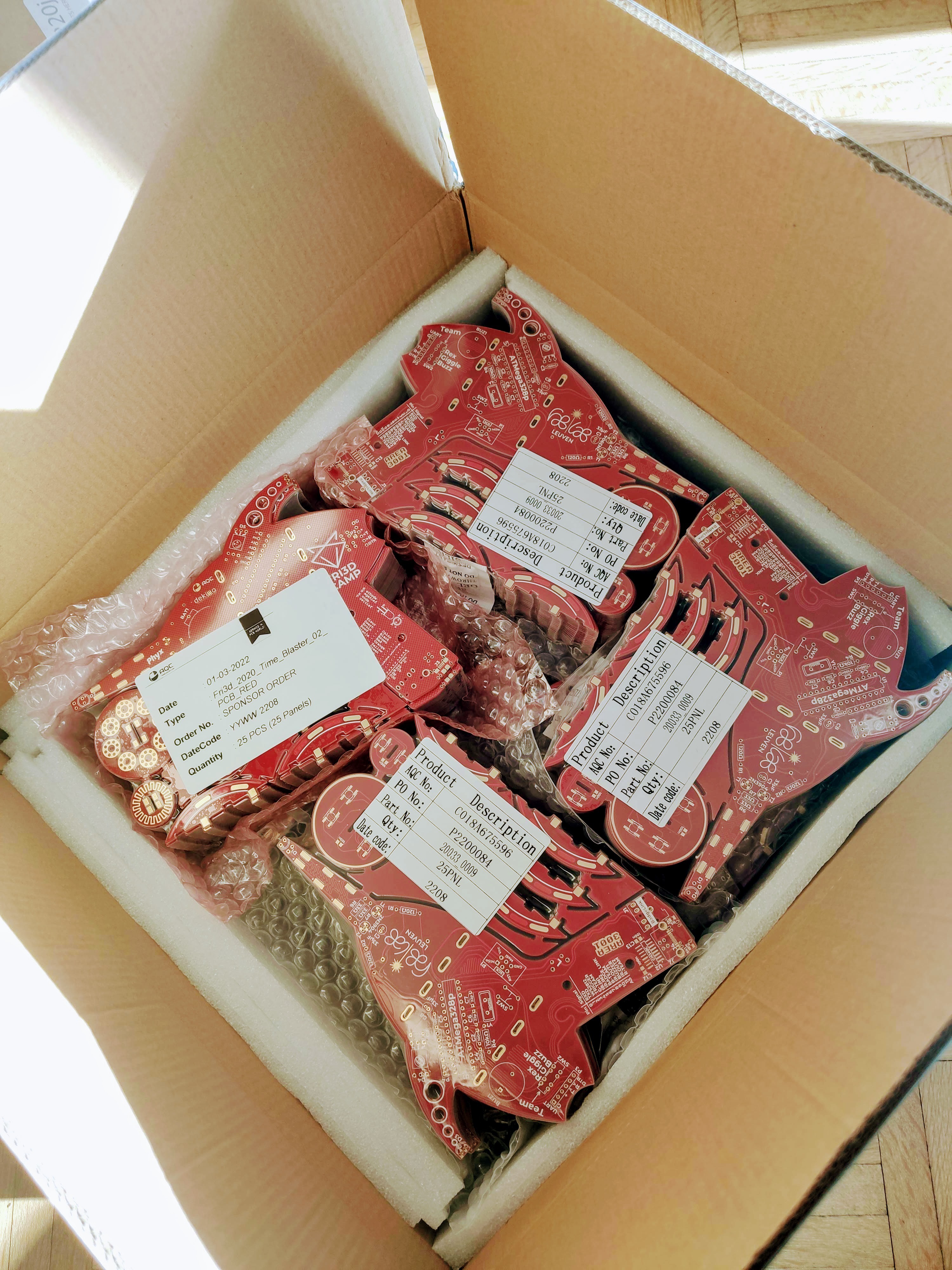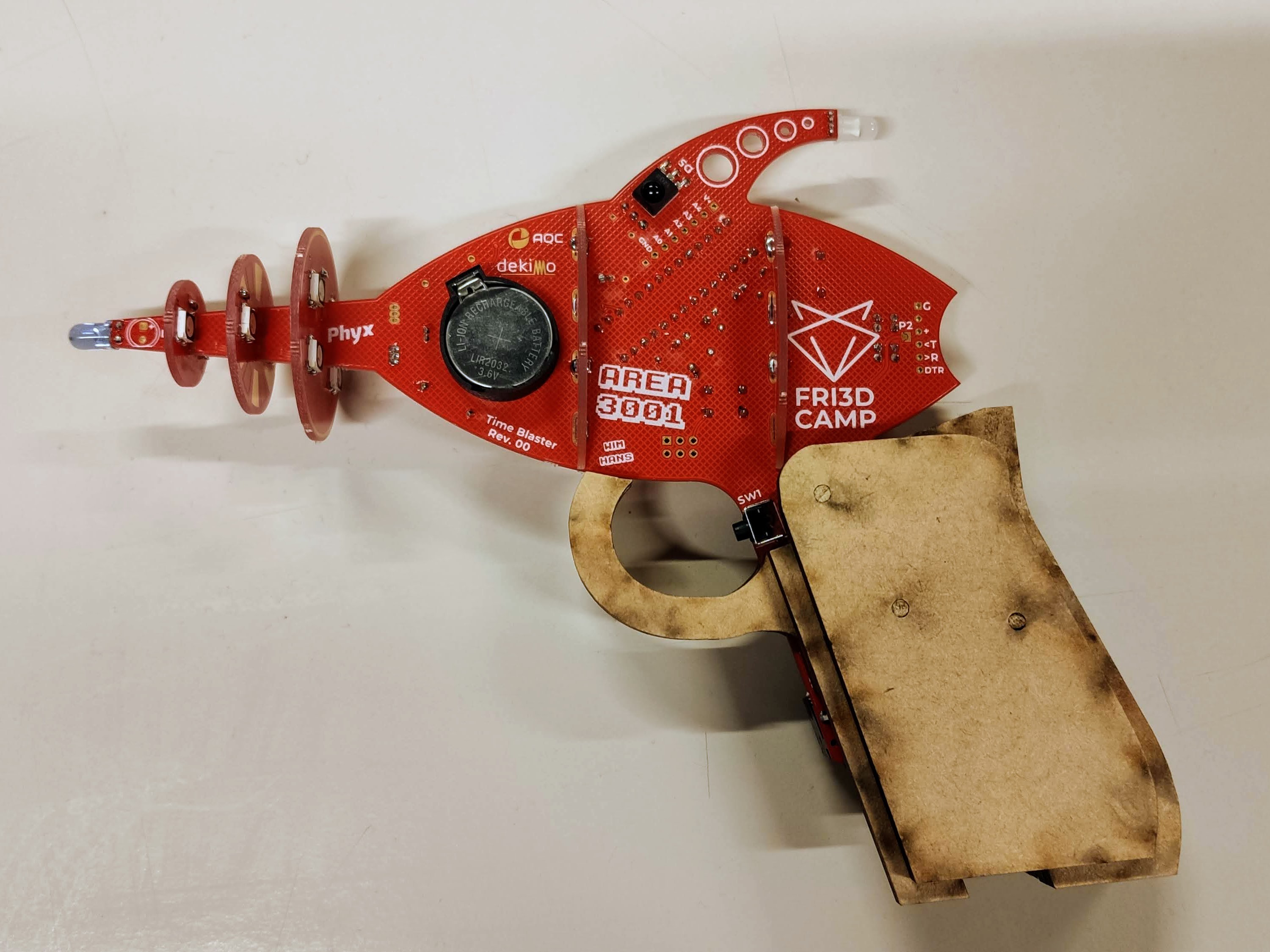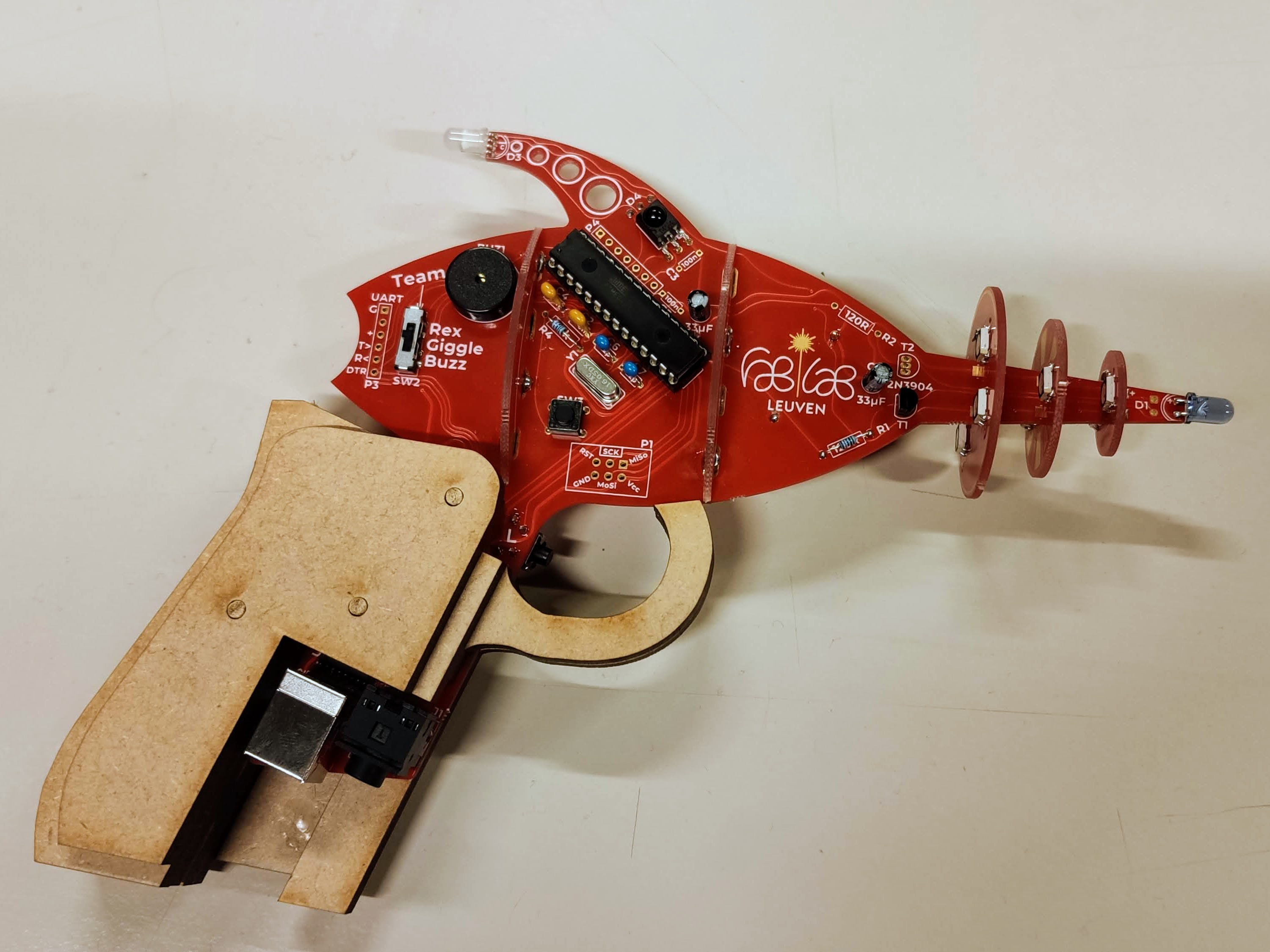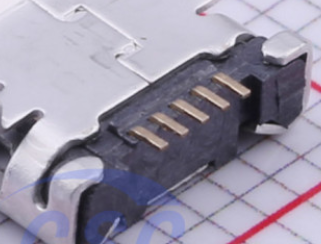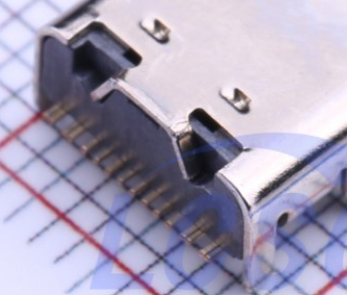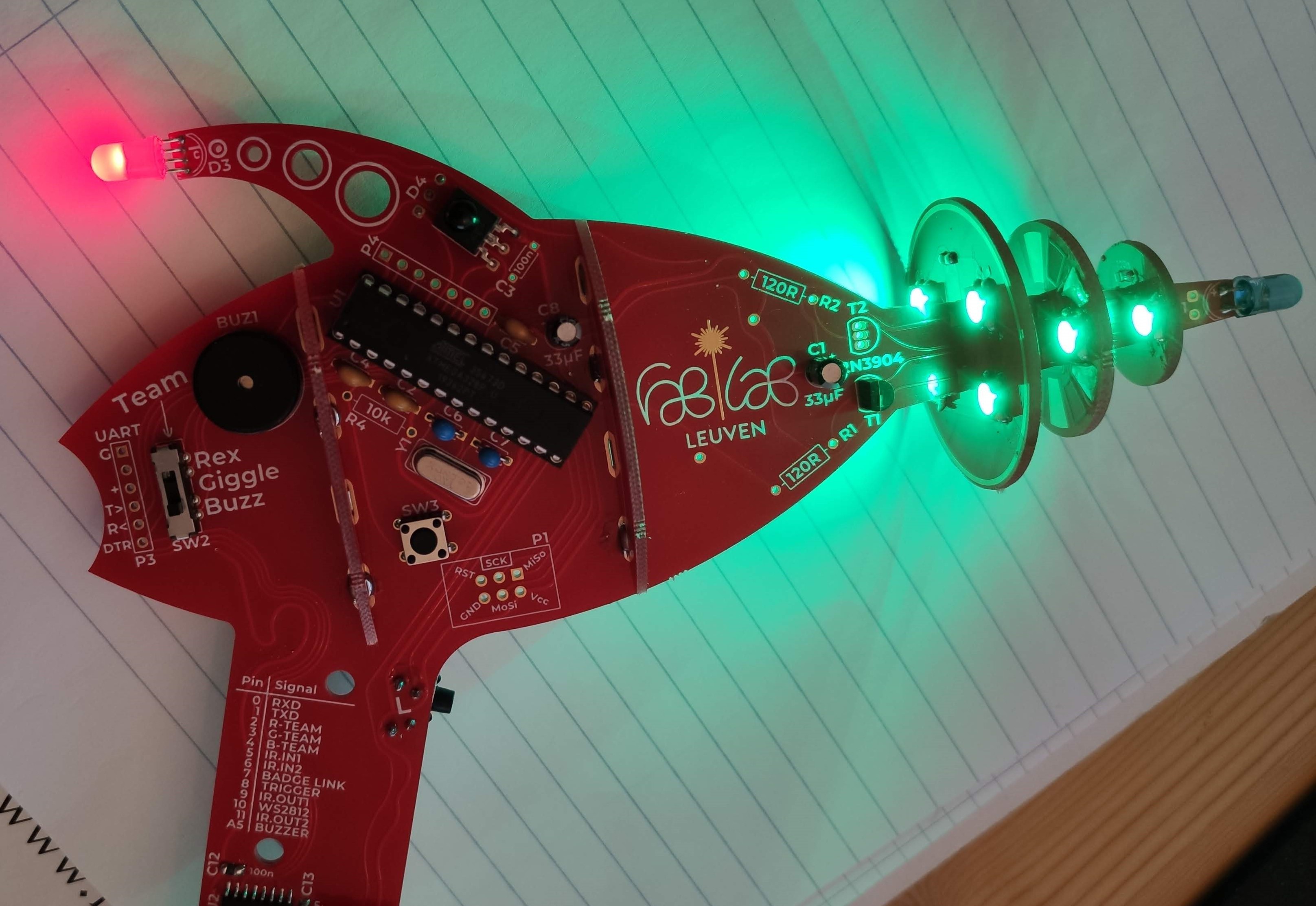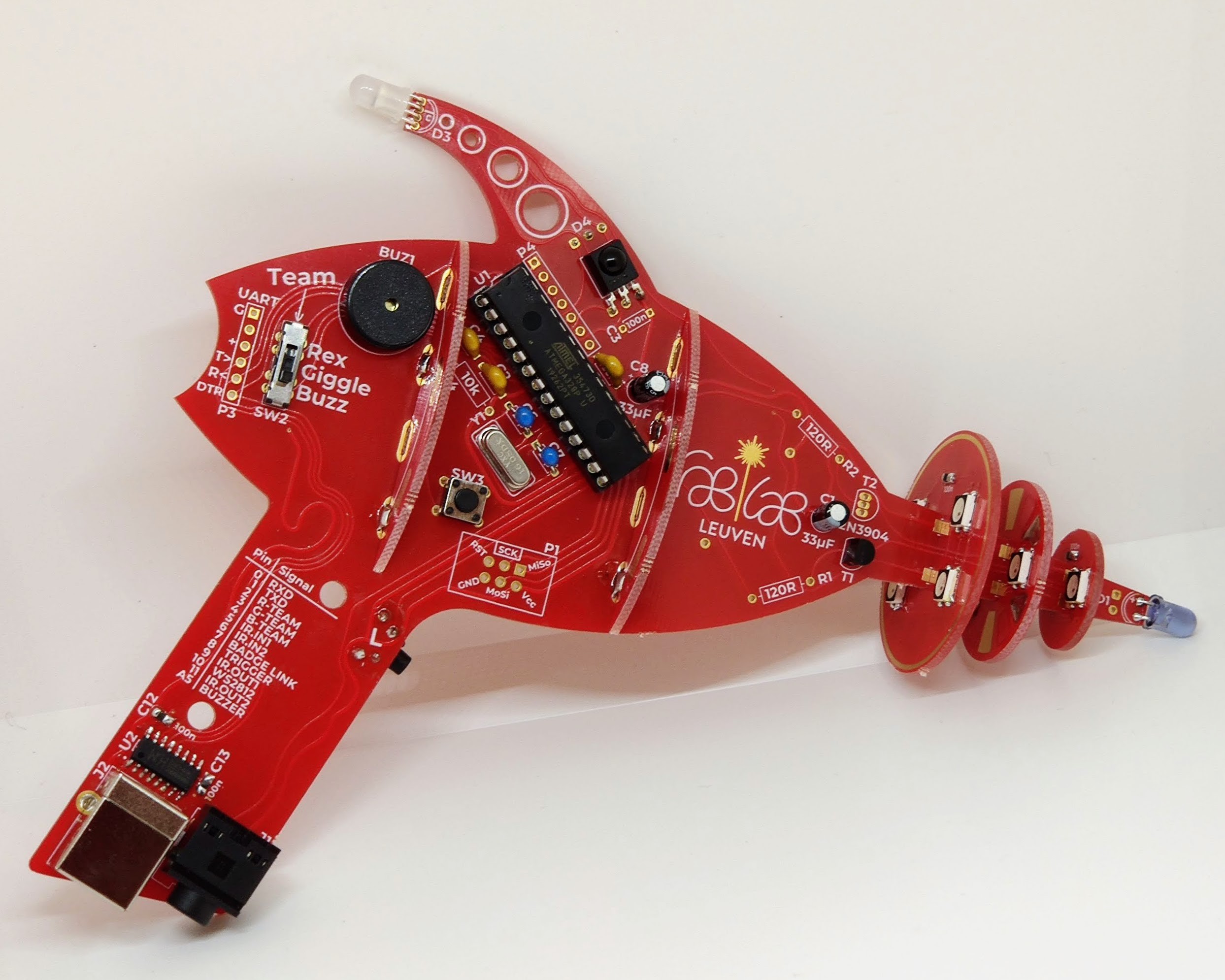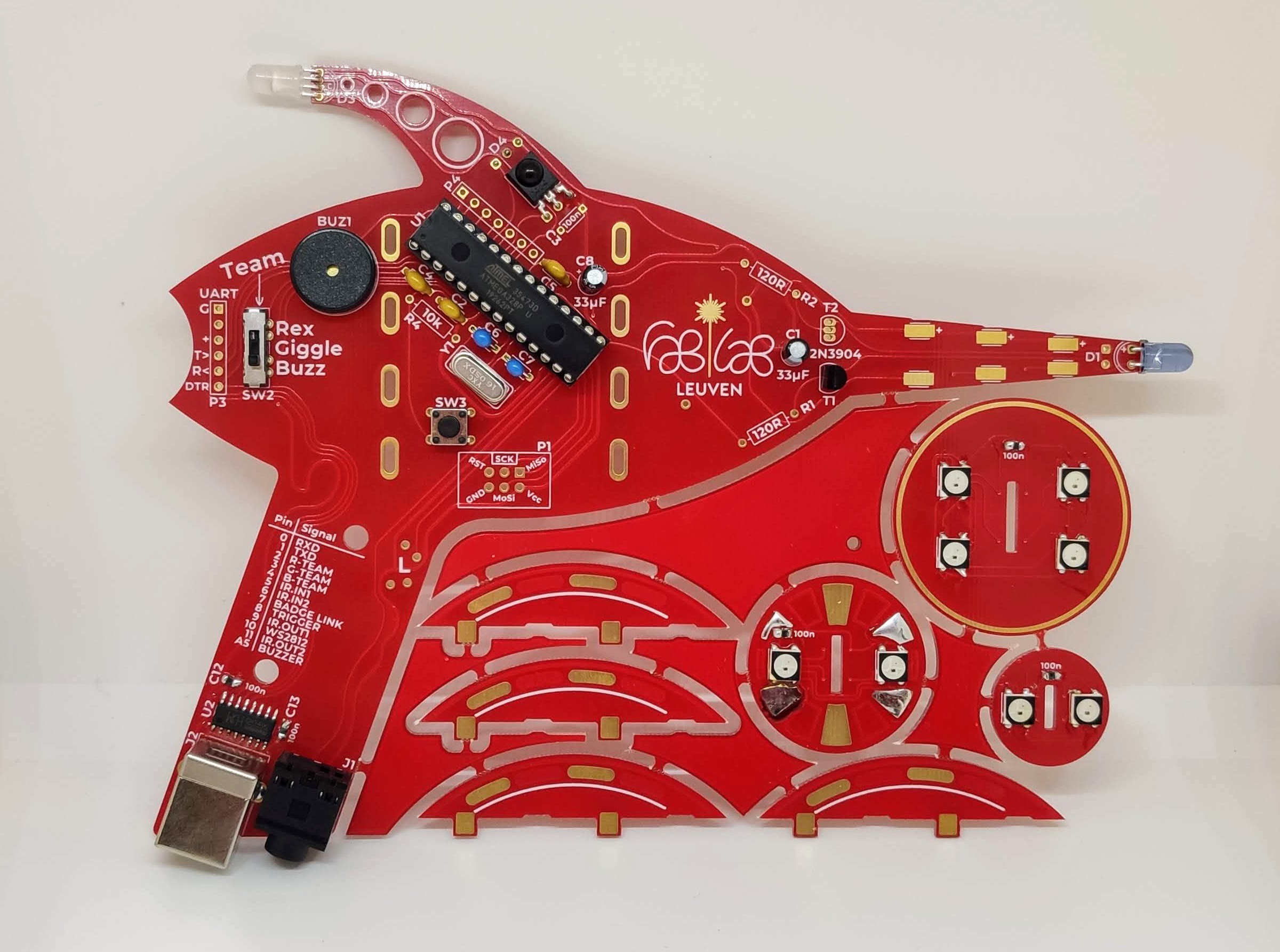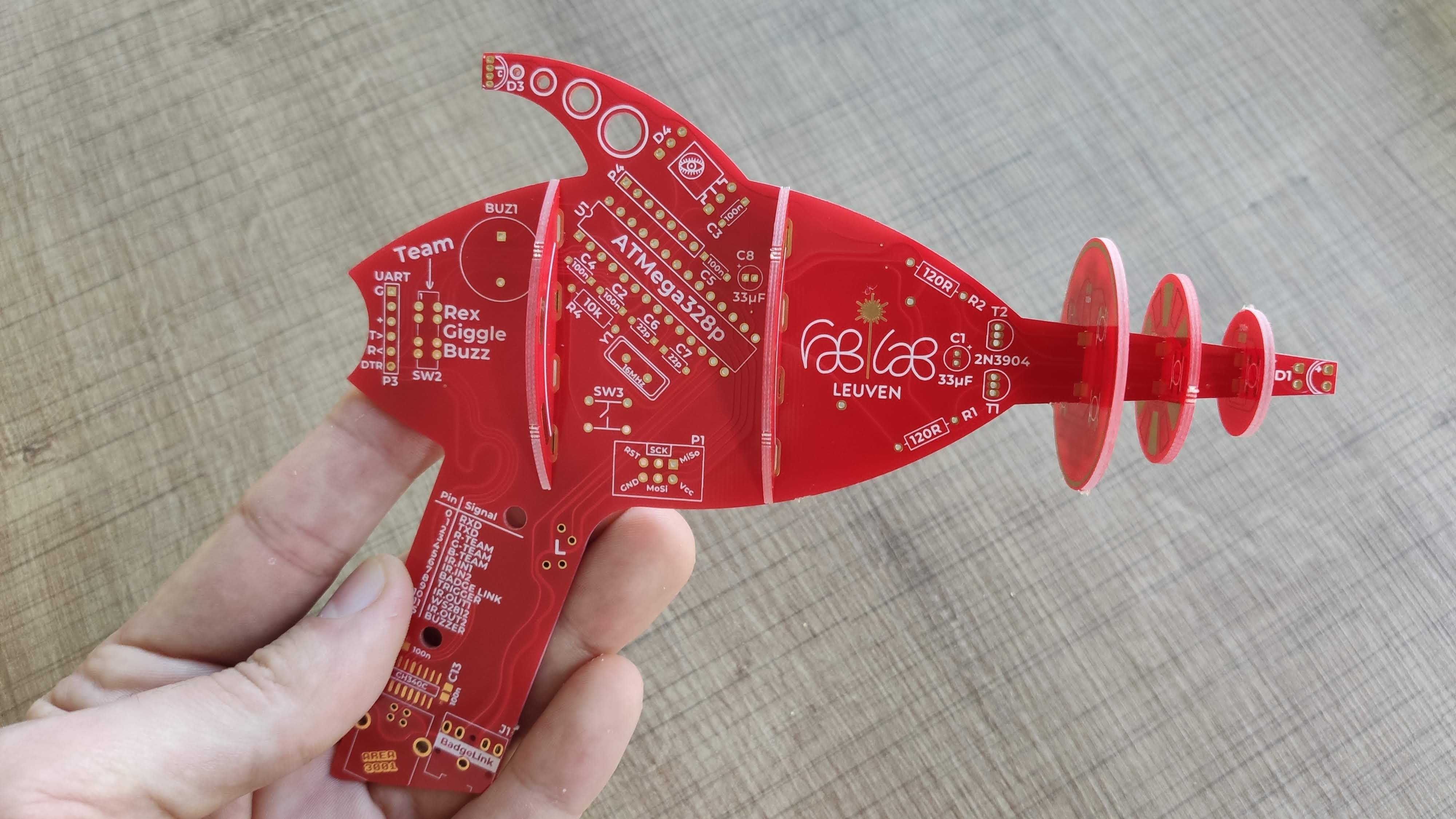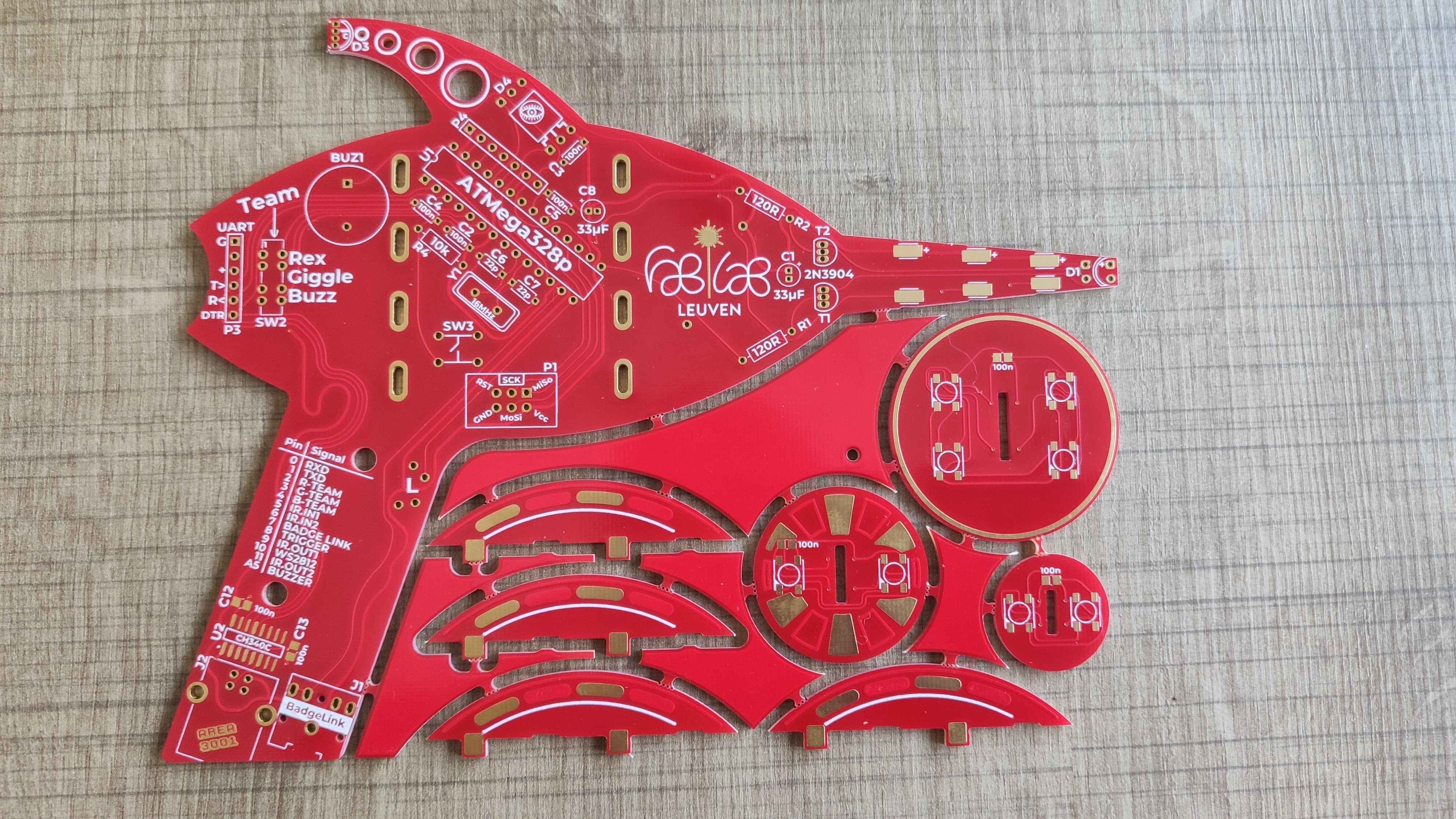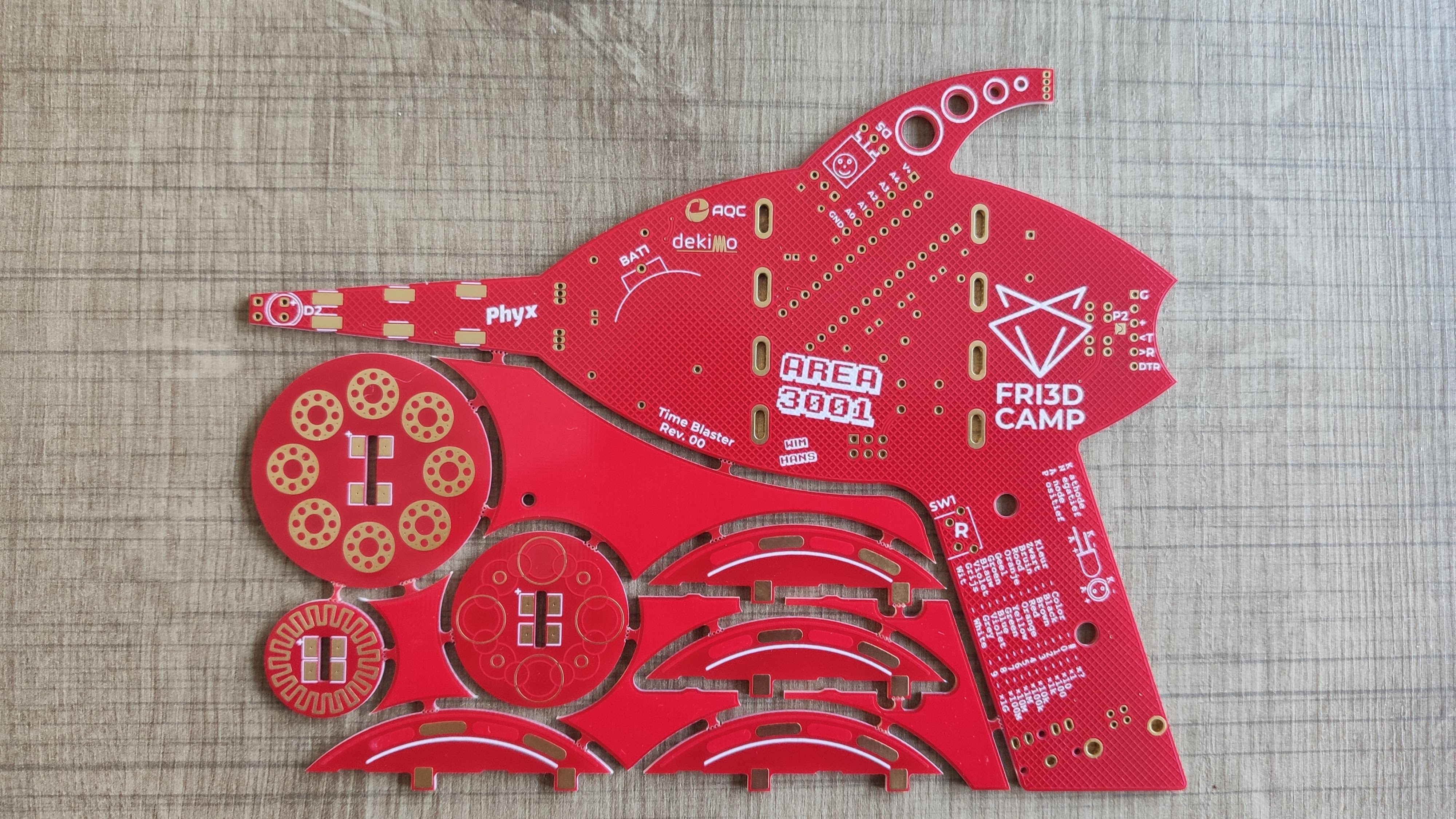-
Packaged and ready for camp!
08/04/2022 at 07:00 • 0 commentsAll blasters now have pre-programmed microcontrollers, got a nice small manual explaining the basics and are fully packaged for Fri3d Camp!
We will have stock available during camp, so drop by the shop to get yours if you didn't pre-order!
-
3D Printed Grip
07/28/2022 at 07:42 • 0 commentsThomas Pilkington from FabLab Leuven designed a grip you can print at home and screw on the blaster making it more comfortable. The model includes holes for both left- and righthanded versions as wel as holes for both USB-C as USB-B connectors (which are optional). The grip is screwed on using two M4x25 hex bolts and nuts. The files are available on this page and will be posted to the Github repository and can be printed as-is, or modified to your own design.
![]()
![]()
-
PCBs have arrived!
02/23/2022 at 10:52 • 0 commentsThanks to our partner AQC we just received the boards, now it's time to start packaging the kits.
![]()
-
OSHWA Certified
01/26/2022 at 20:34 • 0 commentsThe blaster has just been certified by the OSHWA. The ID is BE000005.
Meanwhile the gerbers have been sent off to the PCB production plant for the first batch!
-
Infrared range
03/11/2020 at 16:46 • 0 commentsWe succeeded in transmitting data over a range of 32 meter.
Aiming the blasters became impractical at a range of about 25 meters.
---------- more ----------We tested outside in the dark to eliminate interference from the sun.
Technical specs:
- IR carrier frequency: 38 kHz
- IR switch frequency: 1000 Hz
- blaster power supply: 5 V for transmitter, 3.6 V for receiver.
To send data we turn the 38 kHz carrier frequency on and off.
The duration of the on + off length determines the type of signal (start, 0, 1, stop)
time on in ms (1000 Hz) time off in ms Start 8 16 logical 1 1 1 logical 0 1 3 Stop 1 1+ This is loosely based on the NEC IR protocol.
sending one bit takes 2 ms on average, excluding the start and stop bit.
-
Bigger handle
01/23/2020 at 08:56 • 0 commentsSince the blaster is designed for kids, adults might feel the handle as being a bit too cramped. Luka made a mockup for a lasercut handle built out of 3mm thick material and using some wooden skewers to assemble it.
This design will be refined with the next revision of the hardware and will also be converted into a 3D printable model with snaps / screw holes so everyone can make their own handle and modify it to fit their needs.
![]()
![]()
-
Revision 01 updates
01/14/2020 at 19:21 • 0 commentsSo we started on the next revision of the blaster. Mainly we'll be increasing the solderability of the finer pitch through hole parts (TO-92 and 5mm WS2812 LED) and increasing the pads of the SMD parts for the same reason.
One of the new features added will be the choice of USB connector. Currently only a USB-B was foreseen, since it's really easy to solder and the minimum SMD pitch would be 1.27mm, perfect for the beginner in SMD soldering. But by popular demand we added the Micro USB, with 0.65mm pitch, and USB C 16pins with 0.5mm pitch. For the Micro USB connector we made sure to source one that does not have metal at the backside, reducing the chance of creating a solder bridge between the casing and the pins and making sure that the heat of the solder iron goes towards the pin and not the casing. We do run the risk of some molten connectors, but we'll make sure to have some spare ones available on site.
Micro USB connector back side USB C connector back side -
RGB test
12/10/2019 at 07:35 • 0 commentsAfter burning the Arduino bootloader, a quick test was uploaded and so far the LEDs seem to work as expected. Although the Through Hole has Red and Green swapped compared to the SMD WS2812b LEDs.
![]()
-
First prototypes assembled
12/10/2019 at 07:32 • 0 commentsAll components are in, so it's time to assemble the first prototype.
![]()
![]()
-
PCB are in!
12/10/2019 at 07:29 • 0 commentsAQC deliverded the PCBs. And everything seems to fit! Now it's a matter of waiting for the components to arrive.
![]()
![]()
![]()
 Wim Van Gool
Wim Van Gool